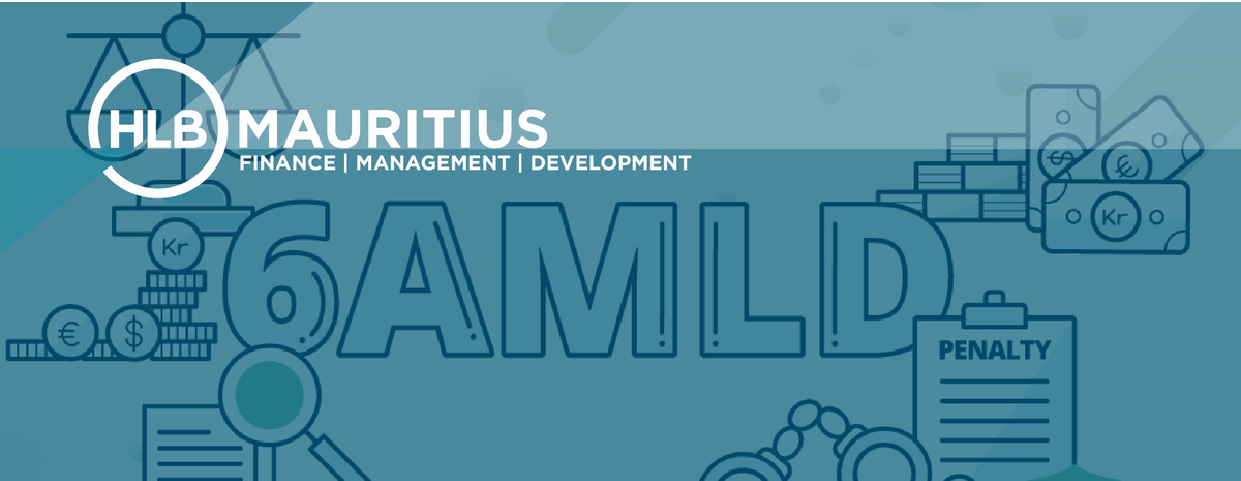ANTI-MONEY LAUNDERING: An update on the 6th EU Directive

After the Danske Bank scandal that reported the laundering of approximately Euro 200 billion, the EU recognised that the 5th Anti Money Laundering Directive (“5AMLD”) was deficient and that money laundering still remained a serious phenomenon, damaging the reputation, stability and integrity of the financial system. The 6th Anti Money Laundering Directive (“6AMLD”) was therefore introduced in October 2018, to deal with money laundering more effectively. The 6AMLD states that it “aims to criminalise money laundering when it is committed intentionally and with the knowledge that the property was derived from criminal activity”.
Obligated businesses in the EU member states were expected by the 3rd of June 2021 to have completely implemented the changes brought in by the 6AMLD in their AML/CFT compliance framework. Because the 6AMLD touches upon the fundamentals about the nature and scope of money laundering as an offence, its impact on the regulatory environment and its application gives rise to remarkable considerations.

By Kaminee Busawah
Managing Director
HLB Risk & Compliance Consultancy Ltd
Key changes brought in by the 6AMLD
The 6AMLD has brought along the following major changes:
- Clarifies Money laundering Predicate Offenses
- Widens the scope of Money Laundering Offenses
- Extends Corporate Liability
- Introduces tougher punishments
The above changes have been considered to be particularly important for ‘Designated Non-Financial Businesses or Professions’ (“DNFBPs”) dealing in the corporate, legal, accountancy and professional services sectors, providing advice and assistance on issues such as company formation, tax restructuring or the structuring of corporate finances. No doubt Financial Institutions and asset service providers are also under the loop. The introduction of corporate criminal liability means that firms must have in place a comprehensive AML/CFT programme that comply with EU and local laws that are subject to on-going assurance testing and review. It is therefore critical that firms operating in the EU fully understand the details of these new regulatory requirements. With that in mind, let’s have a quick overview of the key changes listed above.
Clarifies Money laundering Predicate Offenses
The 6AMLD has attempted to update, harmonize and clarify what constitutes a predicate offense for money laundering across all EU member states by defining 22 predicate offences. It has also intended to address barriers to international legal cooperation on AML/CFT.
The term “criminal activity” has been defined as “any kind of criminal involvement in the commission of any offence punishable” by imprisonment for more than 6 months or one year (dependent on the jurisdiction) in line with national law. While criminal property has been defined as criminally-derived “assets of any kind,” and it is not only limited to fiat. A predicate offense is now a criminal act whose proceeds can be prosecuted under the money laundering offenses. While many of the crimes listed in the 6AMLD may be relatively familiar, such as drug trafficking, fraud, counterfeiting, terrorism, extortion, etc., the Directive included numerous new crimes for consideration such as:
- Cybercrime
- Environmental crime
- Insider trading and market manipulation
The 6AMLD further introduces the concept of ‘extraterritoriality,’ meaning that countries could prosecute conduct that would be a crime if it had taken place in their territory. The Directive even enables a member state to trigger an investigation if an offense is committed “in part on its territory”.
Widens the Scope of Money Laundering Offenses
The 6AMLD details the key money laundering offenses that member states should criminalise and widened the scope of what actually should constitute an offence. They include:
- Conversion or transfer– which means converting or transferring criminal property to conceal or disguise the illicit origin of the property or assisting a person who is involved in activity to evade legal consequences of their actions.
- Acquisition, Possession or Use– which means acquiring, possessing and using criminal property with the knowledge that it is criminally derived property.
- Concealment or disguise– This includes concealing or disguising the nature, source, location, disposition, movement or the ownership rights of criminal property.
Furthermore, the 6AMLD has created an additional offense of “aiding and abetting, inciting and attempting” any of the aforementioned offences, specifically targeting the DNFBPs. It also introduced the concept of ‘self-laundering,’ which is where a criminal cleans the proceeds generated by his or her criminal activity. The changes represent considerable challenges to the DNFPs who have been also termed as ‘innocent’ criminal associates who while acting as gatekeepers might cooperate in the hiding, disguising or distancing of illicit assets.
The above inclusions make it clear that criminal conviction of the predicate offense is no more essential for bringing action against those suspected of committing any of the money laundering offenses.
Extends Corporate Liability
The 6AMLD makes it clear that not just individuals can now be considered liable for money laundering offenses, but businesses also can be liable where they failed to exercise control or supervision, which enabled or allowed money laundering. Law enforcement can pursue prosecutions against both individuals and businesses at the same time.
Also, the concept of corporate failure does no more prevent the ability to initiate criminal proceedings against individuals working in a non-complying business. Senior management staff can now be personally responsible for the doings of their junior member staffs.
Tougher Punishments
The 6AMLD introduces tougher punishments against individuals and corporates that are not effective, proportionate and dissuasive in respect of the AML/CFT compliance framework. Imprisonment has been increased for up to four years. Other measures might include fines, bans on running for public office or professional disqualification. For corporates, measures range from being barred from accessing public benefits, revocation of license, administrative fines, closure of business, freezing and confiscation of assets.
It can be discerned that the introduction of the 6AMLD might eventually open floodgates for egregious and ongoing defaulters if their AML/CFT framework is not recalibrated to incorporate the changes brought by the latter.
Please contact us on legal@hlb-mauritius.com or on +(230) 203 3900.





